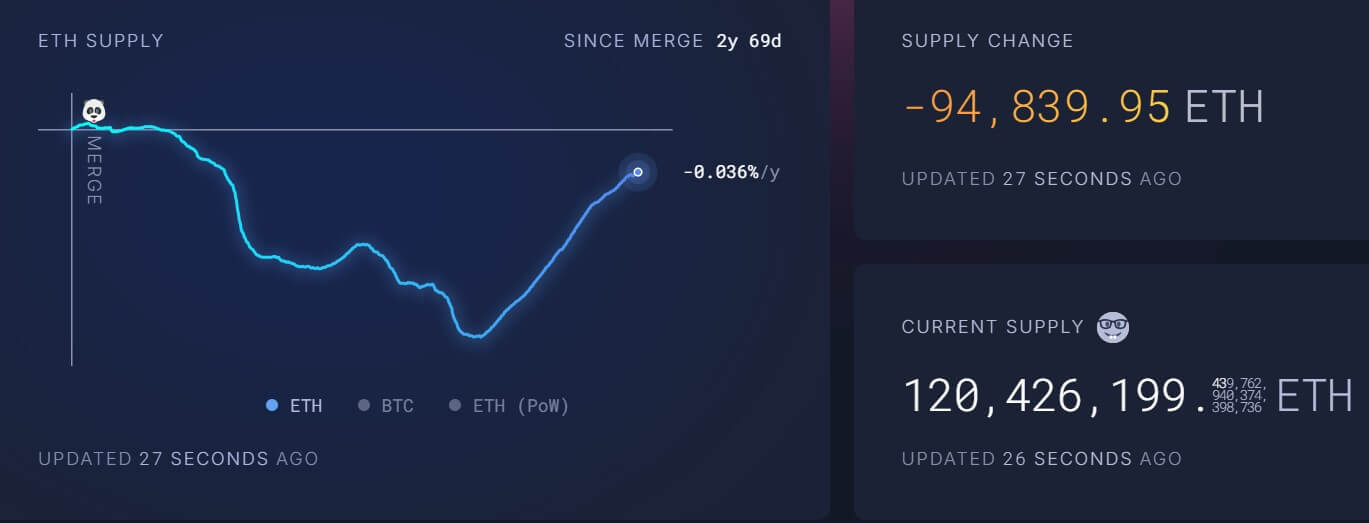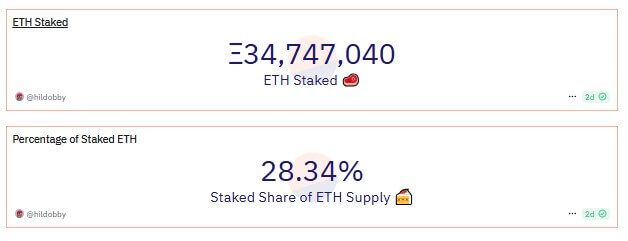Ethereum is going through its most prolonged period of inflation, with more than 350,000 ETH (worth around $1.1 billion) added to its supply since the Dencun upgrade in March, according to data from ‘Ultrasound.money. Ethereum’s current inflation rate is 0.35%.
The increase brought the total supply to 120.4 million ETH, leaving just under 95,000 ETH to match levels seen during the September 2022 Ethereum merger.

The nearly two years of ETH supply reduction have been erased in just seven months since EIP-4844, also known as Dencun or Proto-Danksharding.
How Dencun Changed Ethereum’s Supply Dynamics
The Dencun update introduced significant changes that reduced Ethereum’s base fee usage rate.
By allocating specific block space to Layer 2 networks to process bulk transactions, called blobs, competition for mainnet block space was reduced. Additionally, the proto-danksharding mechanism made data availability more efficient, leading to a sharp drop in base fees.
These events severely impacted the blockchain network’s transaction fees, causing Ethereum to issue more ETH than it burns in most blocks.


As a reminder, Ethereum has burned 45,022 ETH while issuing 78,676 ETH over the last 30 days. This resulted in a net increase in supply of over 30,000 ETH, highlighting the inflationary impact of the base fee reduction environment.
Impact of staking
The increase in Ethereum’s inflationary pressure is also linked to the rise in ETH’s staking ratio. Coinbase analyst David Han noted that while the Dencun upgrade has had a significant impact on the Ethereum ecosystem, changes in the inflation rate appear linked to broader factors, including l The increase in the ETH staking rate, which accelerates all token issuances.
Ethereum’s move to Proof of Stake (PoS) strengthened network security and increased stakes, but it also resulted in more ETH being issued. Validators who lock their ETH to secure the network earn rewards in the form of newly created tokens.


According to data from Dune Analytics, approximately 34.7 million ETH, or approximately 28% of the total supply, is currently staked. This staked ETH helps secure the network and generates rewards, thereby increasing the Ethereum supply.
Additionally, the growing trend of catch-up, especially with protocols like EigenLayer, amplifies this effect. Users reinvesting their staking rewards generate even more ETH, worsening the inflationary impact.

